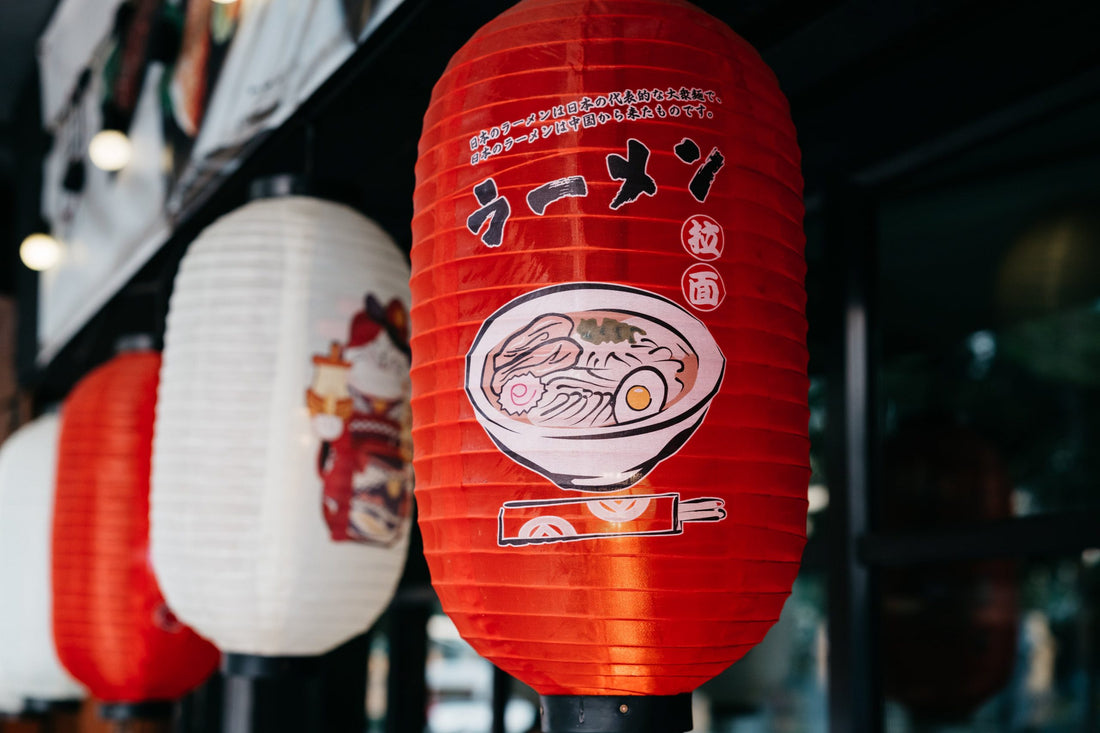RECIPE
Delicious and comforting homemade Ramen from 0Although this recipe may seem very elaborate and complex, you will see that with a few ingredients and in a few steps we have a delicious ramen ready at home, which is very desirable in this cold weather.
The origin of Ramen
Before we dive into the preparation of this exquisite Ramen recipe, we are going to take you on a journey through time and culinary traditions. Originally from Japan in the 20th century , Ramen becomes an embrace between the rich Chinese heritage and Japanese creativity. This dish, more than just a noodle soup, tells a story of gastronomic innovation that has spread throughout the world. So, as we prepare to enjoy this culinary experience, let us remember that each sip of Ramen is a journey through the history of Japanese cuisine.

The importance of Dashi
Dashi broth is a fundamental element in Japanese cuisine and is the base of many dishes, including soups, sauces and stews. Its importance lies in its ability to enhance and balance the flavors of the ingredients.
In Japanese, "Dashi" (だし) literally means "broth" or "soup," and is essentially an aromatic liquid made from ingredients such as kombu seaweed (a type of seaweed) and dried bonito (katsuobushi). These ingredients are infused in hot water to extract their flavors, thus creating a distinctive umami base.
Kombu seaweed provides marine notes and a mild umami flavor, while dried bonito flakes add depth and complexity to the broth. The result is a flavorful liquid that is used as a base for soups such as miso ramen, udon, and other Japanese culinary preparations.
Dashi is not only known for enhancing the flavor of dishes, but also brings an authentic and characteristic touch to Japanese cuisine. This broth, despite its simplicity, plays a crucial role in creating the richness and depth of flavors in Japanese cuisine.
And now, we move on to the recipe:




Ingredients for Dashi Broth:
- 1 liter of water
- 1 kombu seaweed (dried seaweed)
- 1 cup dried bonito flakes (katsuobushi)
Ingredients for Ramen:
- Ramen noodles (fresh or dried)
- Dashi Broth
- Toppings to taste: low-temperature cooked egg, bamboo shoots, green onion, spinach, corn, sautéed mushrooms, nori seaweed and slices of roast pork.
Let's start the recipe with the base broth or dashi:
1. In a pot, add the water and kombu seaweed. Let it sit for at least 30 minutes so the seaweed can infuse its flavors into the water.
2. Heat the mixture over medium heat, without letting it boil. Remove the kombu seaweed just before it starts to boil.
3. Add the dried bonito flakes to the pot and let it simmer for about 5 minutes.
4. Strain the broth to remove the bonito flakes and any impurities.
Now the ramen's turn:
5. Cook the ramen noodles according to package directions, making sure to achieve the perfect texture.
6. To add an extra touch of complexity, cook an egg at a low temperature, creating a soft, delicious yolk (optional, but highly recommended).
7. Prepare a variety of traditional toppings, such as bamboo shoots for texture, green onion for freshness, spinach, corn for a sweet touch, sautéed mushrooms for depth, and sliced roast pork for juiciness and smoky flavor.
Plating
Once we have our preparations ready, it is time to plate. To do this, serve the ramen noodles in a large bowl, creating the perfect base for your creation. Slowly pour the hot Dashi broth over the noodles, allowing them all to infuse with the flavors of the noodles. Now add the previously prepared toppings you have chosen, creating a visually attractive presentation and a balanced combination of flavors. Decorate the bowl with delicate strips of nori seaweed and finely cut chives.
Alternatives and tips
- If you don't have time and want to always have a good base broth on hand for your soups or ramen, we highly recommend this concentrate or this other one , ready to use, which in addition to giving an incredible flavor, will help you a lot, well With a small amount they provide great flavor.
-We recommend you eat the ramen when it is hot, as the flavors will melt better on your palate and you will be able to savor it in all its intensity.
-As for the toppings you add, you can do without the meat if you prefer and create a vegetable ramen, which will be equally delicious.


